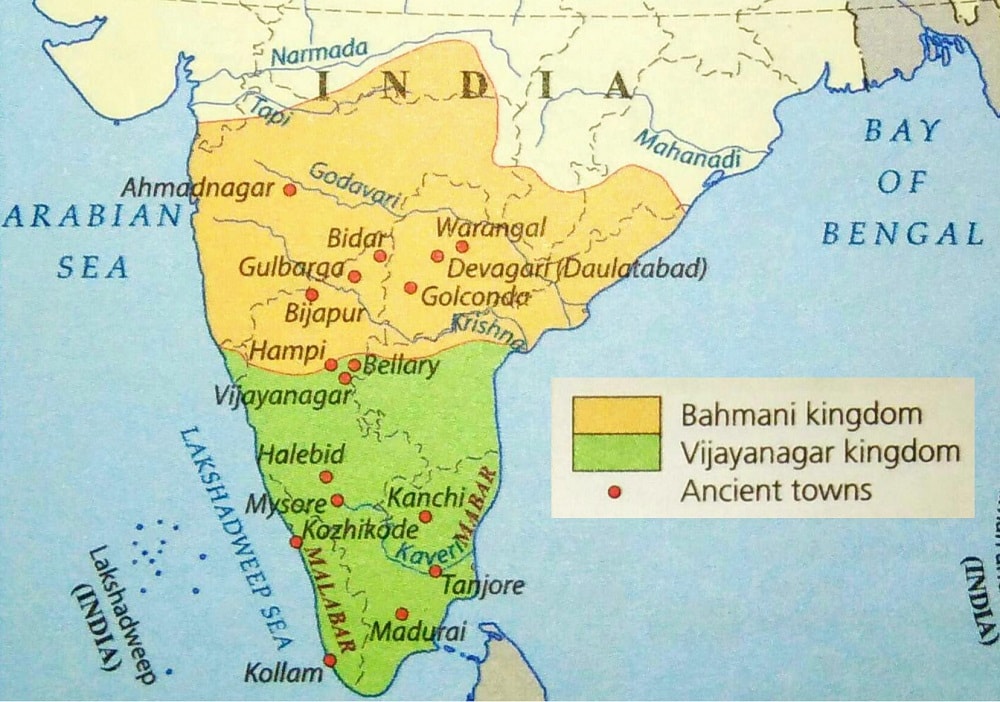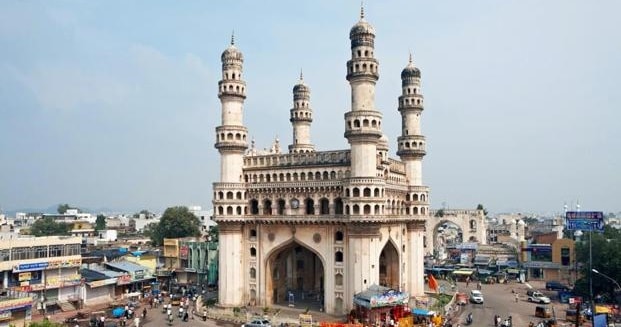Contents
vijayanagar empire krishna deva raya bahmani kingdom quli qutub shah adil shahi
- By the end of the Sultanate Period, Multan and Bengal were the first territories to break away from the Delhi and declared independent.
- Many other territories in the Deccan region also rose to power.
>>>>>
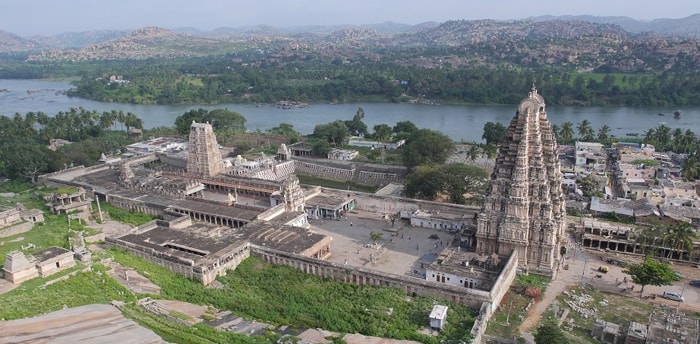
vijayanagar empire krishna deva raya bahmani kingdom quli qutub shah adil shahi
Vijayanagar Empire (1336-1672)
- Harihara and Bukka founded the Vijayanagar Empire in 1336.
- It was on the southern banks of Tungabhadra river.
- They made Hampi as the capital city.
- Before they served under Kakatiya ruler of Warangal.
>>>>>
Vijayanagar Empire was Ruled by
- Sangama dynasty
- Saluva dynasty
- Tuluva dynasty
- Aravidu dynasty
>>>>>
Harihara (1336–56)
- In 1336 Harihara became the ruler of Sangama Dynasty.
- By 1346, the whole of the Hoyasala kingdom had passed into the hands of the Vijayanagar rulers.
- By 1377, the sultanate of Madurai was completely wiped out.
- Vijayanagar empire then comprised the whole of south India upto Rameswaram.
- Bagepalli Copper Plate Inscription of Harihara I tells us about his achievements.
- In 1356 Bukka succeeded Harihara.
vijayanagar empire krishna deva raya bahmani kingdom quli qutub shah adil shahi
Deva Raya (1406–22)
- Deva Raya was able to make alliance and defeated Firoz Shah of Bahmani and annexed the entire territory up to the mouth of the Krishna.
- A Venetian tourist Nicolo Conti visited his court.
- Hazare Rama temple was constructed during his rule.
- Madhura, a noted Jain poet, was in his court.
- Madhura wrote the Dharmanathapurana on the life of the 15th Jain Tirthankar in Kannada.
>>>>>
Deva Raya II (1424–46)
- Deva Raya II was the greatest ruler of the Sangama dynasty.
- He acquired the title of Gajabetegara.
- In order to strengthen his army, he inducted more Muslims in his army.
- He asked all his Hindu soldiers and officers to learn the art of archery from Muslim army.
- Srirangam copper plates of Deva Raya Il list the various achievements of the ruler.
- Sanskrit poet Gunda Dimdima and Telugu poet Kavisarvabhauma Srinatha, author of Haravilasam, was in his court.
- Persian traveller Abdur Razzak visited his court.
vijayanagar empire krishna deva raya bahmani kingdom quli qutub shah adil shahi
Saluva and Tuluva Dynasty
- After some time of the death of Dev Raya II the throne was usurped by the king’s minister, Saluva Narasimha.
- Thus the Sangama dynasty came to an end and the Saluva dynasty was established.
- The Saluva dynasty also soon came to an end, and a new dynasty called the Tuluva dynasty was founded by Vira Narasimha.
>>>>>>>
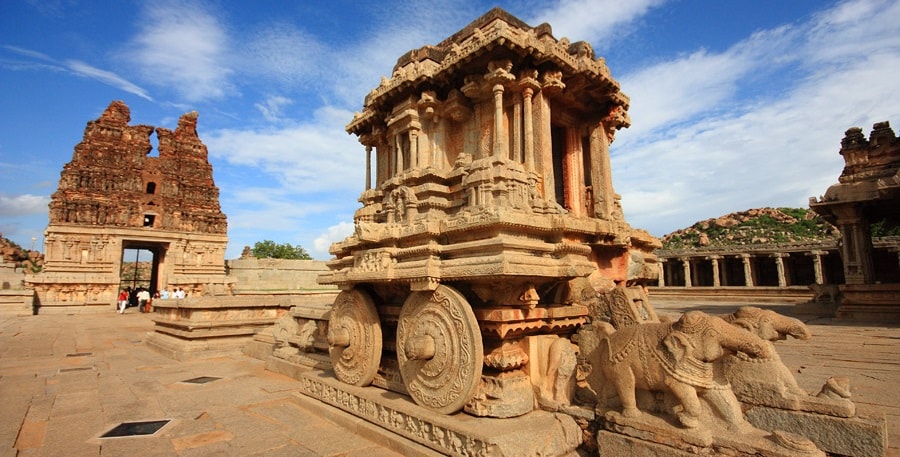
vijayanagar empire krishna deva raya bahmani kingdom quli qutub shah adil shahi
Krishna deva Raya (1509-29)
- Krishnadeva Raya of the Tuluva dynasty was the most famous king of the Vijayanagar Empire.
- He assumed the title of ‘Yavanarajyasthapanacharya’ (Establisher of the Yavanaor Muslim kingdom).
- In 1523 he captured Orissa and Warangal.
- He built large tanks and canals for irrigation.
- He maintained friendly relationship with the Portuguese governor, Albuquerque.
- Portuguese traveler Domingo Paes and Barbosa visited his court.
- He was known as ‘Andhra Bhoja’.
- Eight eminent luminaries in literature known as Ashtadiggajas were at his court.
- He wrote Amuktamalyada in Telugu.
- Allasani Peddana, the author of Manucharitram, he was also known as Andhra Kavitapitamaha.
>>>>>>
Achyuta Deva Raya (1529 – 42)
- Achyuta Deva Raya was the younger brother of Krishna Deva Raya.
- Portuguese traveler, Fernoa Nuniz, came to India during his reign.
- He patronised the Kannada poet Chatu Vittalanatha, the great singer and composer Purandaradasa (father of Carnatic music), and the Sanskrit scholar Rajanatha Dindima II.
- The Tiruvengalanatha temple, which is now popularly known as Achyutaraya temple.
- Tenali Rama, the author of Panduranga Mahatyam also was a famous poet of this region.
>>>>>>
Rama Raja
- Ram raja was a son-in-law of Krishna Deva Raya.
- He was able to playoff various Muslim power against one another.
- He entered into a commercial treaty with the Portuguese.
- Ram Raja completely defeated the Bijapur ruler.
- Then he allied himself with the Bijapur ruler to inflict humiliating defeats on Golconda and Ahmednagar.
- However, his enemies (except Berar) ultimately combined to inflict a crushing defeat on Vijayanagar at Bannihatti, in Battle of Talikota, in 1565.
- This battle is also known as the Battle of Raksasa Tangadi.
- Rama Raja was imprisoned and immediately executed.
>>>>>>
Trade and Commerce
- According to Abdur Razzak, state had 300 sea ports.
- Most important commercial area on the west coast was Malabar, with its important port Cannanore.
- Among the exports, the main items were cloth, spices, rice, iron, salt petre, sugar, etc.
- They issued Gold Pagoda or Varaha Coin.
>>>>>>
Position of Women
- Women occupied a high position and took an active part in political, social and literary life of the empire.
- They were educated and trained in wrestling, in the use of various weapons of offence and defence, in music and fine arts.
- Nuniz writes that the kings had women astrologers, clerks, accountants, guards and wrestlers.
>>>>>>
vijayanagar empire krishna deva raya bahmani kingdom quli qutub shah adil shahi
Bahmani Sultanate (1347-1526)
Alauddin Hasan Bahman Shah (1347-58)
- Also known as Hasan Gangu was the founder of Bahmani Kingdom.
- He was a Turkish officer of Devagiri under Muhammad bin Tughlaq.
- His sultanate stretched from the Arabian Sea to the Bay of Bengal, included the whole of Deccan up to the river Krishna
- Capital at Gulbarga.
>>>>>>
Muhammad Shah-I (1358-77)
- He was an able general and administrator.
- He defeated Kapaya Nayaks of Warangal and the Vijayanagar ruler Bukka-I.
>>>>>>
Firoz Shah Bahmani (1397-1422)
- He defeated the Vijayanagar ruler Deva Raya I.
>>>>>>
Ahmad Shah Wali (1422-35)
- Ahmad Shah Wali conquered the kingdom of Warangal.
- He changed his capital from Gulbarga to Bidar.
>>>>>>
Muhammad Shah-lll (1463-82)
- In 1463 Muhammad Shah-lll became the Sultan at the age of nine
- Muhammad Gawan became the regent of the infant ruler.
- Under Muhammad Gawan’s able leadership the Bahmani kingdom became very powerful.
>>>>>>
Muhammad Gawan
- He was the vakil as well as the wazir of Muhammad Shah Ill between 1463-81.
- He improved the administration, systematized finances, encouraged public education, reformed the revenue system, disciplined the army and eliminated corruption.
- In 1481 Muhammad Gawan persecuted by the Deccan Muslims who were jealous of him and sentenced to death by Muhammad Shah.
- He introduced the use of gunpowder in the war against the Vijayanagar kings in Belgaum.
>>>>>
vijayanagar empire krishna deva raya bahmani kingdom quli qutub shah adil shahi
Breck up of the Bahmani kingdom
Nizam Shahis of Ahmadnagar (1490-1633)
- Founded by Ahmad Bahri.
- Later in 1633 Ahmadnagar was conquered and annexed by Shah Jahan in 1633.
- Malik Ambar was a popular Prime Minister of the Ahmadnagar, also pioneer in guerilla warfare.
- Sultana Chand Bibi defended Ahmednagar against the Mughal forces of Akbar in 1595.
- She acted as Regent of Bijapur during the minority of Ibrahim Adil Shah II.
>>>>>>
Adil Shahi Dynasty of Bijapur (1490-1686)
- Adil Shahi Dynasty was founded by Yusuf Adil Shah.
- Muhammed Adil Shah (1627-1656 ) built Gol Gumbaz, a tomb with the world’s one of the largest dome at Bijapur.
- It is also famous for the so-called ‘Whispering Gallery’.
- Ibrahim Adil Shah II (1580–1627) is known as Jagadguru Badshah.
- He was tolerant towards other religion.
- Adil Shahi Dynasty was later conquered and annexed by Aurangzeb in 1686.
>>>>>>
Imad Shahis of Berar (1490-1574)
- Founded by Fatullah Khan Imad-ul-mulk.
- Later it was conquered and annexed by one of the Nizam Shahi rulers of Ahmadnagar.
>>>>>>
Qutub Shahi Dynasty of Golconda (1518-1687)
- Founded by Quli Qutub Shah who built the famous Golconda fort and made it his capital.
- Muhammad Quli Qutub Shah, was the greatest of all, and he founded the city of Hyderabad.
- He also built the famous Charminar in it.
- The kingdom was later annexed by Aurangzeb in 1687.
>>>>>>
Barid Shahis of Bidar (1528-1619)
- Founded by Ali Barid.
- It was later annexed by the Adil Shah of Bijapur.
>>>>>>
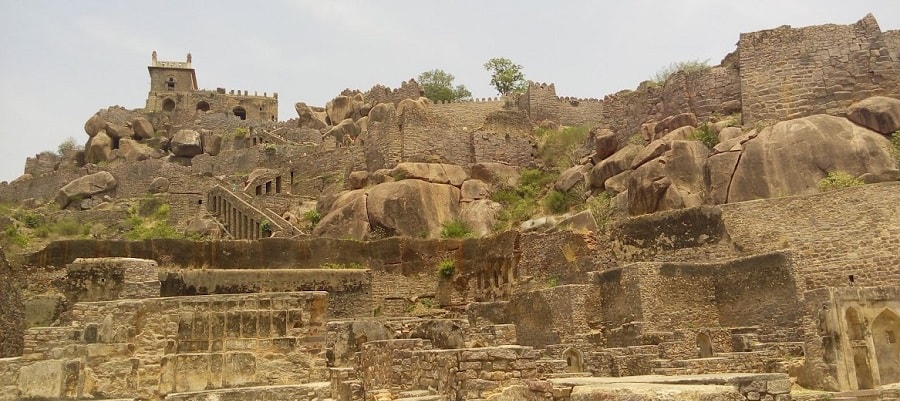
vijayanagar empire krishna deva raya bahmani kingdom quli qutub shah adil shahi
Vijayanagar – Bahmani Conflict
- The conflict was over the control of the Raichur doab.
- Raichur doab is between rivers Krishna and Tungabhadra.
- This area was fertile and rich in mineral resources.
- The famous diamond mines of Golconda were located in the eastern part of the doab region.
- Krishna–Godavari basin is very fertile, and foreign trade cab controlled from here.
- The Marathwada region was extremely fertile and included with it the port of Goa.
- Port of Goa was an important outlet for export as well as import, especially of horses from Iraq and Iran.
- The Conflict started on a large scale in 1367 during the reign of Bukka I.
- He assaulted the fortress of Mudkal in the disputed Tungabhadra doab and slaughtered the entire garrison.
- The war dragged on for several months, but the Bahmani Sultan could neither capture the Raja nor his capital.
- Finally, both sides were exhausted, and concluded a treaty which restored the old positions.
- The reign of Deva Raya I began with a renewed fight for the Tungabhadra doab.
- He was defeated by the Bahmani ruler, Firoz Shah.
- The conflict ended up with the Battle of Talikota in 1565.
vijayanagar empire krishna deva raya bahmani kingdom quli qutub shah adil shahi





